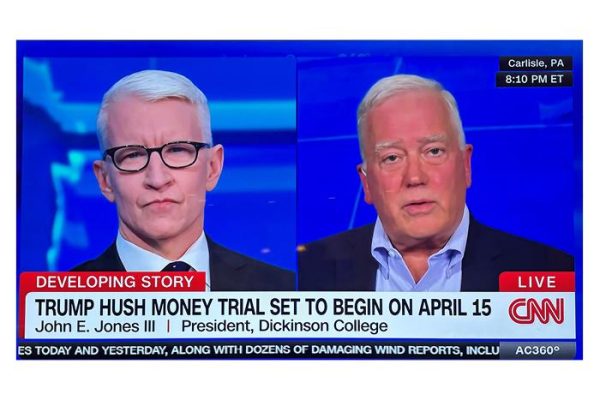Office of LGBTQ Services Celebrates Bi Visibility Day
At National Bisexuality Visibility Day, student pride coordinators educated interested community members, and passing prospective students, on the bisexual identity.
The event, which was put on by the Office of LGBTQ Services, took place on Saturday, Sept. 23
“[Bisexuality] is celebrated with the rest of the LGBTQ community. We are a part of the community, we are the ‘B’ in the acronym. But, sometimes, bisexuals are seen as too straight to be queer, or too queer to be straight,” said Julie Rose Williams ’18, a programming & events pride coordinator.
Williams and Courtney Gamache ’18, who is the news, marketing, & public relations pride coordinator, sat out on Britton Plaza from 11 a.m. to 3 p.m. on Saturday distributing pins, bracelets, cookies and informational pamphlets all sporting the pink, purple and blue of the bisexual flag. Williams also commented on the music from the table, explaining that the playlist consisted of songs performed by an array of popular bisexual musicians, listing Lady Gaga, Kesha, Halsey, P!nk, David Bowie and Freddie Mercury. She believed that having many bi musicians on the playlist would bring awareness to the identity.
“It just so happens that today is a big admissions day, so we’re getting, you know, even prospective students to learn more about it,” Williams said after Gamache greeted a prospective student who came to the table to grab a cookie and read a pamphlet.
Williams pointed out the “fact and myth” sheets stacked on the table. She described them as explaining “some common things that people who are bisexuals hear, and how they’re kind of harmful.” She described the various misconceptions typed out on the pamphlets, such as how bisexuality is simply considered a phase or that someone may not be considered bisexual unless they have had a relationship with all genders.
In response to how bisexuals are, sometimes, considered transphobic because the prefix “bi-” implies that only two genders exist, the Office of LGBTQ Services inserted an inclusive definition of bisexuality on their informational sheets: “The potential to be attracted romantically and/or sexually to people of more than one sex and/or gender, not necessarily at the same time, not necessarily in the same way and not necessary to the same degree.”
“It’s more of a ‘two or more’ definition,” Williams explained. “We’re just trying to be here and be visible… They [people identifying as bisexual] have their own identity, so having a day just serves to bring awareness to the fact that it is their own proper identity and that they do exist within the community.”
Gamache recommended R.A.I.S.E. (Red Devils Advocating for Safe Spaces for Everyone) trainings for students or other community members wishing to learn more about the bisexual identity or other members in the LGBTQ community.
“[R.A.I.S.E. is] sort of like basic LGBTQ-101 training, where you can go and get a sort of ally-type certification,” are a good way for people to continue to educate themselves on bisexuality and to support the community. “We have a bunch of scheduled trainings over the semester – some are just for faculty and staff… some are more student-oriented… we have a bunch on our calendar. Also, if you’re a club or an organization, then you can schedule one just for your club or organization,” she said.
Williams and Gamache encourage everyone to contact the Office of LGBTQ Services if they wish to learn more about R.A.I.S.E. trainings or to get involved with the community.




